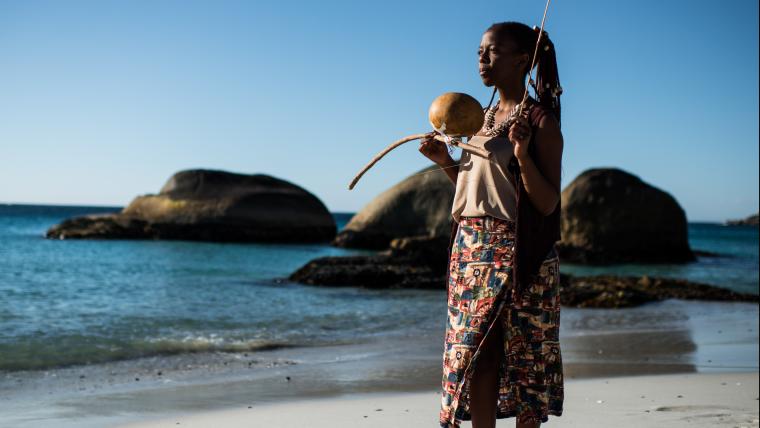Qhawekazi Giyose cultivates and celebrates her identity with her music. Her sound is a manifesto that honours her pride in the traditions passed down through generations of isiXhosa people. She makes and plays traditional instruments made from calabash gourds and tree branches which enhance her soulful vocals. Using the uhadi and umrhubhe musical bows – uncommon in local music – Giyose is infusing contemporary songs with the rich lyrical and musical heritage of her culture.
Giyose, together with Gugulethu Duma and Shakeel Sohail-Gibran Cullis, is part of Found at Sea, a music collective that draws inspiration from and seeks to preserve the culture of the isiXhosa people through music. Giyose has always been fascinated by indigenous sounds, but knew her knowledge was lacking because of the colonial influences on her upbringing. The East London jazz musician trained at the Cape Town Academy of music, as well as The Jazz Workshop and Keele University. Giyose’s return to indigenous music – she recently obtained a BA in Ethnomusicology and Jazz vocals from Rhodes University – has helped her become a stronger musician with a greater awareness of herself. “The more we learn about heritage, the more we understand the core of who we are,” she says.
Found at Sea’s debut EP was dedicated to Madosini, a teacher and healer who mentored the collective and enabled them to find their purpose while making music. Their commitment to isiXhosa music is bringing more than just good sound to South Africans; it’s also reintroducing us to a tradition that is at risk of being forgotten. “Playing these rhythms is like going into a time machine and experiencing our identity in a different time and place,” Giyose says. Through the rediscovery of her heritage, she is decolonising the South African music industry and preserving indigenous knowledge for generations to come.































Please sign in to leave a comment